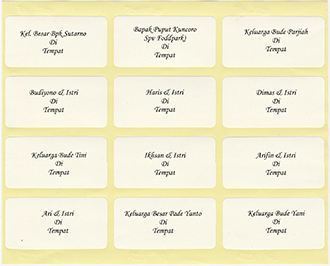Revolution of Printing: From Ink to Innovation in the Digital Era
Revolution of Printing: From Ink to Innovation in the Digital Era
Keyword: printing
Labels: Printing, Technology, Business, Innovation, Design
Introduction
Printing is everywhere. From product packaging to advertising materials, from art reproductions to official documents, the printing industry has deeply influenced modern communication and commerce. While traditional printing once relied heavily on ink, paper, and mechanical presses, today's technologies allow for digital precision, on-demand services, and even 3D object creation.
This article explores the journey of printing from its historic roots to the cutting-edge innovations shaping its future. We’ll dive into the types of printing, key industries, popular services, business opportunities, and how SEO and online tools now drive the printing business.
The Origins of Printing
The story of printing dates back to ancient civilizations. As early as 220 AD, the Chinese used woodblock printing techniques to reproduce texts. The turning point came in 1440 when Johannes Gutenberg introduced the movable-type printing press in Europe, revolutionizing mass communication and literacy.
Over the centuries, printing methods improved with lithography, letterpress, and offset printing. Each innovation allowed for faster, cheaper, and more detailed reproduction of images and text.
Types of Modern Printing Techniques
In the 21st century, printing methods have diversified significantly. Some of the most prominent types include:
1. Offset Printing
This method transfers ink from a plate to a rubber blanket, then onto the paper. It’s ideal for high-volume print jobs like newspapers, magazines, and books.
2. Digital Printing
Digital printers take electronic files and print them directly onto various media. Perfect for short runs and customized prints such as flyers, brochures, or business cards.
3. Screen Printing
Mostly used for textiles and merchandise like T-shirts and tote bags, this method pushes ink through a mesh screen onto the substrate.
4. 3D Printing
Rather than ink, 3D printing builds three-dimensional objects layer by layer using materials like plastic, resin, or metal. It’s transforming industries from healthcare to construction.
5. UV and Sublimation Printing
UV printing uses ultraviolet light to cure ink instantly, while sublimation is ideal for transferring designs onto fabric, ceramics, and glass.
Printing in Business and Marketing
The role of printing in branding and marketing cannot be overstated. Companies depend on visually impactful materials to attract, inform, and persuade consumers. These include:
- Product packaging
- Flyers and posters
- Branded merchandise
- Event backdrops and signage
- Corporate stationery
Print media still holds trust and tangibility that digital ads lack. A professionally printed brochure or booklet gives an air of legitimacy and permanence.
Why Printing Is Still Relevant in a Digital World
Despite the rise of digital communication, printing continues to thrive because:
- Physical Impact: Print offers sensory experiences — touch, texture, and smell.
- Better Retention: Studies show people remember printed materials better than digital ones.
- Brand Perception: High-quality printed materials enhance brand image.
- Offline Reach: Print captures audiences outside the digital bubble.
Popular Printing Services Today
Many printing businesses now offer a wide range of customized services. These may include:
- Business cards with metallic foiling
- Photo books and custom calendars
- Stickers, decals, and labels for products
- Custom apparel printing (DTG and screen print)
- Large format prints (banners, billboards)
- Wedding and event invitations
Printing and E-commerce
SEO for Printing Businesses
To compete online, a printing business must appear in search engines. Here’s how SEO plays a crucial role:
- Use target keywords: “printing,” “digital printing near me,” “custom print services.”
- Optimize Google My Business: Especially important for local print shops.
- Showcase portfolios: High-quality images with alt text can boost rankings.
- Content marketing: Blog posts about design tips, paper types, or print trends attract traffic.
- Responsive website: Mobile-friendly design helps retain users.
Emerging Trends in the Printing Industry
The future of printing is being shaped by several exciting trends:
1. Eco-Friendly Printing
Consumers now demand sustainable practices. Printers are switching to soy-based inks, recycled paper, and energy-efficient machinery.
2. Personalization at Scale
Digital technology enables hyper-personalized printing, from birthday-themed packaging to photo-based gifts.
3. Smart Packaging
Interactive print using QR codes, AR triggers, or NFC chips that connect printed packaging with digital content.
4. AI and Automation
AI is now used in design recommendation, print job estimation, and customer service automation.
Case Study: Local Print Shop Success
“BrightPrint Studio,” a small print shop in Melbourne, went digital during the pandemic. They integrated an online order system, invested in a DTG machine, and used Instagram to showcase custom designs. In 2 years, revenue grew by 300%, fueled by personalized merchandise and local delivery.
Printing and Education
Despite tablets and e-learning, printing is vital in schools and universities:
- Study guides and textbooks
- Certificates and diplomas
- Posters for research presentations
- Yearbooks and graduation programs
Challenges Facing the Printing Industry
While opportunities grow, challenges remain:
- Competition from digital-only marketing
- Rising material costs (paper, ink)
- Environmental regulations
- Need for constant technological upgrades
Tips for Starting a Printing Business
If you're planning to enter the printing world, here are tips:
- Pick a niche: posters, shirts, labels, or wedding invites
- Start with digital printers before investing in large equipment
- Master design software: Adobe Illustrator, CorelDraw, Canva
- Build online presence early (social media + website)
- Offer fast turnaround and responsive customer service
Conclusion
From Gutenberg’s press to modern 3D printers, the printing industry has continuously evolved to meet human needs for communication, expression, and innovation. Despite digital alternatives, print remains a powerful and tactile medium that connects people, builds brands, and drives creativity. Whether you’re a designer, business owner, or entrepreneur, understanding the printing world opens the door to countless possibilities.
Author: CreativePrint Insight
Hashtags: #Printing #DigitalPrinting #PrintBusiness #PrintDesign #PrintInnovation



